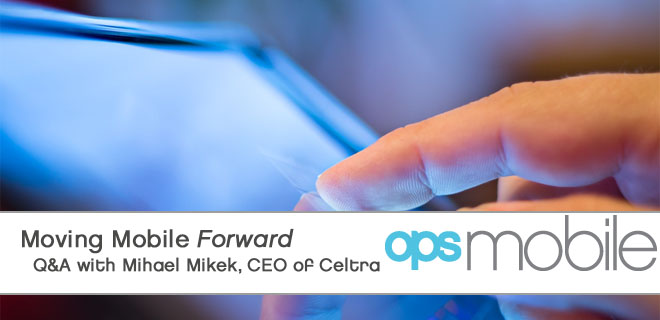
|
In this AdMonsters OPS Mobile Exclusive, AdMonsters connected with Mihael Mikek, CEO and founder of Celtra, to discuss the current challenges facing the mobile industry and the future of mobile as he sees it. |
Mobile advertising – What are some of the biggest challenges?
The biggest challenge of mobile advertising is creating great mobile ads, or from a higher perspective, creating great mobile campaigns.
That is not necessarily the challenge where the industry is spending most of its time and resources today. We are all still dealing with numerous technical hurdles to enable mobile advertising campaigns. The good news is that the industry has come a long way since the introduction of HTML5, and is moving towards standardization, which will fully happen within the next 12 – 18 months.
The next big challenge is to move mobile advertising beyond the imitation of online advertising by leveraging its advantages – mobility and physicality. Ads need to improve from a relevancy and user experience perspective. For instance, we are developing location-sensitive ads, which display relevant content based on location in real-time – this means we are leveraging the advantage of mobility to improve relevancy. Physicality is another advantage, which needs to be leveraged in a better way than just for shakable ads. There’s a lot of room for innovation in this area.
Do you think that standardization of mobile SDKs will happen in the near future? What do you think would be the impact?
Absolutely, this is not questionable at all. It is already happening with the IAB’s first release of the MRAID standard.
Mobile industry stakeholders are working together to standardize SDKs. A lack of standards has made it difficult for brands to build and run rich media ad campaigns across different ad networks and mobile platforms at scale. The challenge with multiple SDKs is that ads for one ad network may not work on another. Plus, it limits the reach of the advertiser’s creative and effectively slows the growth of mobile advertising. SDK standardization will enormously simplify ad creation and trafficking for advertisers and publishers. Much of the current work that is necessary due to the technical challenges will be eliminated. This will have a huge impact on the industry and the entire value chain. Mobile advertising enablers will need to provide the value beyond SDK integrations.
What impact will HTML5 have on the future of mobile advertising?
HTML5 helped to bring the brand advertisers to mobile, and the potential moving forward is massive.
Already, HTML5 has demonstrated that it can do amazing things with mobile ads. HTML5 mobile ads engage consumers with video, games, social media and dynamic content based on location or weather. Additionally, it works across iOS and Android devices, so there is no need to develop for specific platforms. Nearly every mobile rich media ad in the marketplace is now built with HTML5.
Now and in the future, advertisers will continue using HTML5 to build more sophisticated and dynamic ads, providing an even more immersive user experience. For example, a major hotel chain recently introduced a campaign targeting consumers based on location and current weather conditions. Rich media providers are leveraging HTML5 to introduce more advanced ad formats and features that will create a bigger mobile advertising pie for all.
Improving ROI for mobile ad campaigns is a top priority for marketers. What options are there for them to increase performance?
ROI is difficult to measure when it comes to branding campaigns.
My recommendation to the advertisers is to make better ads by defining clear goals, and leveraging the unique capabilities of mobile devices. The first step is to define what you want to achieve and how you can best leverage mobile. Don’t do things just because they are possible. Mobile advertising, in its essence, is like any other type of advertising—its main purpose is to achieve your brand and marketing goals. Effective ads create and communicate the brand’s value and make it relevant for consumers.
Lastly, determine which mobile ad formats and features will drive the desired results. People want to purchase, research, discuss, and interact with brands and their products. Expandable ads with video provide extra information so users can satisfy their research goals. Sharing via social media and gaming encourage users to spend quality time engaging with the brand. Capabilities like swiping, tilting, shaking and painting provide playfulness, richer interaction, and a human touch. Depending on the campaign goal, different features can be combined to drive consumer interaction and ultimately drive results for advertisers.
 |
Interested in learning more about mobile advertising? OPS Mobile will bring digital advertising leaders and ops professionals together to discuss and develop best practices for operational excellence in a world of connected devices. Register today for OPS Mobile, AdMonsters’ mobile advertising conference, which will be held December 7, 2011 in New York. |